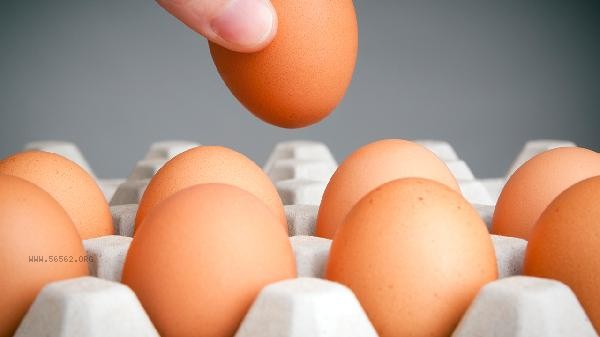The key to preventing bursting when boiling eggs is to control temperature changes and ensure even stress distribution on the eggshell. There are mainly five methods: slow heating, blunt end facing up, soaking in cold water, adding salt to water, and punching holes for exhaust.

1. Slow Heating
Eggs taken out of the refrigerator and directly placed in boiling water can easily burst due to excessive temperature differences. The correct way is to put the eggs and cold water in the pot at the same time, and slowly heat them over low heat until they boil. The gradual increase in water temperature can cause the egg white protein to slowly solidify, reducing the sudden increase in internal air pressure. When using an induction cooker or gas stove, it is recommended to adjust the firepower to a medium low level to avoid local overheating.
2. Blunt end facing upwards
There is an air chamber at the blunt end of the egg, and keeping the air chamber facing upwards during cooking can help the gas to be discharged in an orderly manner. The chamber is located at the blunt end of the egg circle, and a cavity with a diameter of about 5 millimeters can buffer internal pressure. When placed, it can be lightly supported and fixed with a spoon, and it is not easy for the eggshells to collide and break due to rolling when the water boils.
3. Cold water soaking
refrigerated eggs can be soaked in room temperature water for 15 minutes in advance to balance the temperature difference between inside and outside. The appropriate water temperature is 20-25 degrees Celsius, completely submerging the egg to ensure even heating. This method is particularly suitable for eggs that have just been taken out of the refrigerator, as it can prevent the eggshells from becoming brittle and bursting. After soaking, the surface moisture should be wiped dry before entering the pot.

4. Adding salt to water
Adding 5 grams of salt per liter of water can increase the boiling point of water and slow down the boiling intensity. Salt can cause egg whites to solidify faster and form a protective layer, reducing the pressure on the eggshell. Sea salt or edible refined salt can be used, but it needs to be stirred until completely dissolved. This method can also enhance the flavor of eggs and make boiled eggs easier to shell.
Fifth, puncture exhaust
Use a needle to pierce a 0.5mm small hole at the blunt end of the egg chamber to help release internal gas. Use a specialized puncher or sewing needle after disinfection, with a water depth not exceeding 3 millimeters. Excessive attention can puncture the inner membrane, while holes that are too large can cause egg whites to overflow. This method requires slow cooking over low heat for better results.

When cooking eggs, it is recommended to choose eggs with moderate freshness. Eggs stored for 7 days have a smaller air chamber and are less likely to burst. After the water boils, turn to low heat to maintain a slight boiling state, and control the cooking time to 8-10 minutes to obtain soft boiled eggs. After removing the cooked eggs, immediately rinse them with cold water to stop heating and facilitate peeling. It can be used with an egg steamer in daily life, and its constant temperature design can effectively reduce the probability of shell bursting. If the egg has fine cracks, a small amount of white vinegar can be added to help the egg white quickly solidify and seal the cracks.








Comments (0)
Leave a Comment
No comments yet
Be the first to share your thoughts!